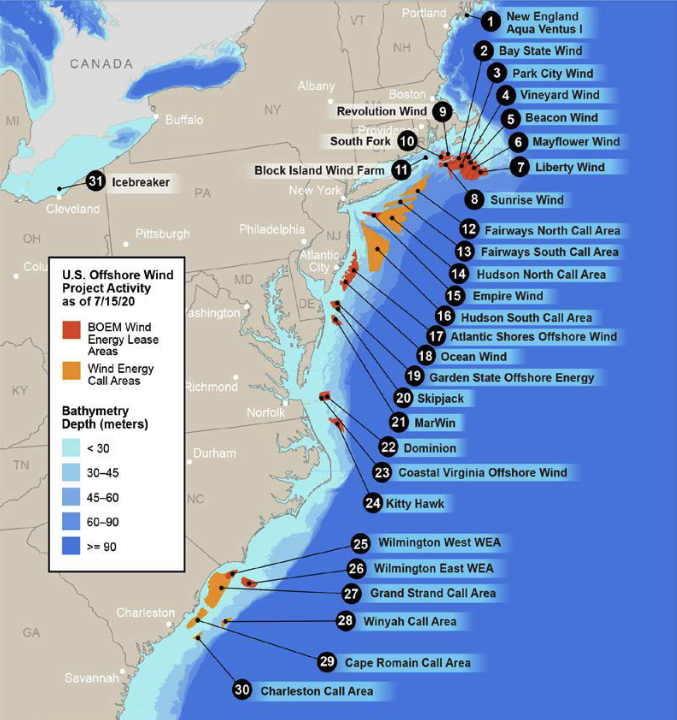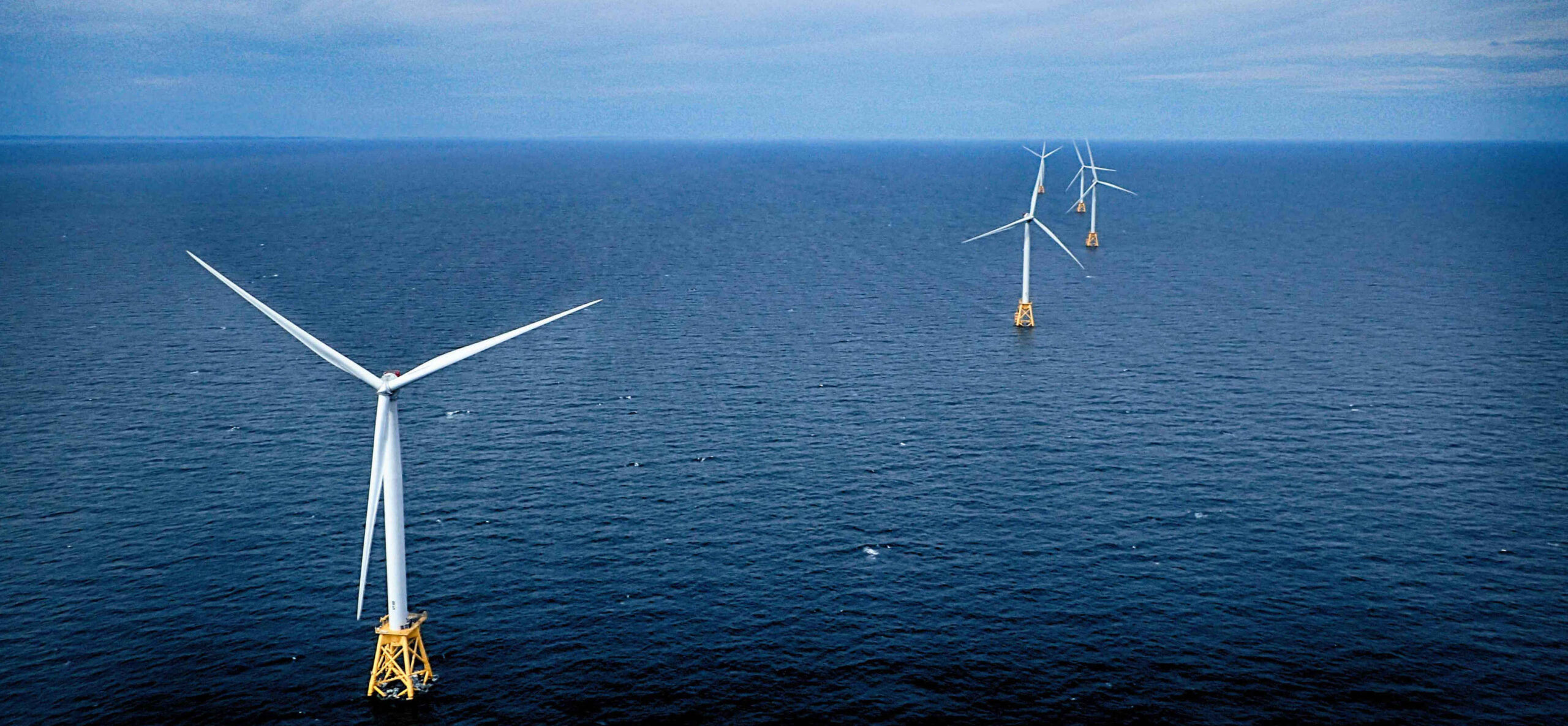President Biden unveiled his plan to begin harnessing the power of offshore wind energy this week.
Chris Carnevale | April 2, 2021 | Florida, Georgia, North Carolina, South Carolina, WindPresident Biden has made combating the climate crisis a critical priority for his administration, with the goals including creating millions of good-paying jobs, improving public health, building 21st-century infrastructure, righting injustices, and protecting the environment. This week, the Biden Administration made not one but two major policy announcements to achieve this priority: the American Jobs Plan infrastructure proposal, unveiled on Wednesday, and the offshore wind plan, revealed on Monday.
A key component of the President’s plan is unlocking the vast clean energy resource of offshore wind and Monday’s announcement formalized the Administration’s target of developing 30 gigawatts (GW) of offshore wind — enough to power millions of homes — by 2030.
Onshore vs. offshore wind
The United States is a global leader in onshore wind energy, which provides about 7% of our nation’s electricity after more than two decades of sustained market growth. The market growth for onshore wind energy has coincided with an overall decline in the technology’s costs, falling by more than half over the last 20 years, such that onshore wind energy is now on average the least expensive source of new electricity generation in the country. Wind energy from new onshore wind farms is now often cheaper than just the price of fuel for gas-fired power plants, let alone the cost of construction and operation.
Yet offshore wind is, at present, another story. While wind farms have been installed offshore for 30 years in Europe and more recently along the coast of China, the U.S. got its first offshore wind farm installation just five years ago, and its second just last year. While offshore wind currently powers about 20,000 homes via these two U.S. offshore wind farms, that number is poised to grow in a huge way.
U.S. offshore wind at a turning point
The current U.S. project pipeline for offshore wind — meaning the areas that are currently leased by wind developers or have been identified by the federal government for future leasing – is more than 28 GW, which would be enough to power millions of homes. Similarly, many coastal states have adopted goals for integrating offshore wind energy onto their grid, with those state goals totaling almost 30 GW by 2035. Meanwhile, the costs are coming down rapidly as offshore wind technology advances and U.S. workers gain experience building it.
Biden’s boost
Looking at the figures of both the current U.S. project pipeline and the state targets (about 28 and 30 GW, respectively-much of which is overlapping, with many current projects located in states with targets), Biden’s choice of 30 GW by 2030 as a national offshore wind target makes a lot of sense. It appears that the target is a commitment from the federal government to help the states achieve their goals, and even provide a wind at their back, accelerating the operational year of 30 GW from 2035, as is currently envisioned in the state targets, to 2030. To this end, it seems that the Biden Administration’s offshore wind policy is aimed at helping ensure that the federal government is a partner in the development of offshore wind with an “all-agencies” approach, so to speak.
The potential for collaboration between federal agencies was on full display in the roll-out of the Administration’s offshore wind policy on Monday, as it had participation from Interior Secretary Deb Haaland, Energy Secretary Jennifer Granholm, Commerce Secretary Gina Raimondo, Transportation Secretary Pete Buttigieg, and National Climate Advisor Gina McCarthy. This commitment to interagency participation could help streamline the permitting process and coordinate research and funding opportunities. These three areas of permitting, research, and funding are borne out in Monday’s announcement, which included:
- A commitment to advance new lease sales and complete review construction and operations plans (COPs) for at least 16 offshore wind farm projects by 2025
- Availability of $230 million in Port Infrastructure Development Grants to get ready for offshore wind installation
- Access to $3 billion in loan capital for offshore wind
- Funding for research projects to support offshore wind deployment
- A model public-private data-sharing agreement between the federal government and a leading offshore wind developer to collaborate on ocean science
The technical potential of offshore wind to power our nation is unquestionably large: the 2,000 GW of technical potential would provide nearly double our entire country’s entire electricity use each year. That is especially true in many Southeastern states–North Carolina’s technical potential for offshore wind is 4 times greater than the state’s current power generation, South Carolina’s is 7 times, Georgia is 2 times, and Florida is 5 times. President Biden’s new offshore wind policy takes us one big step closer to closing the gap between what offshore wind is capable of providing for Americans and what we choose to take advantage of.

